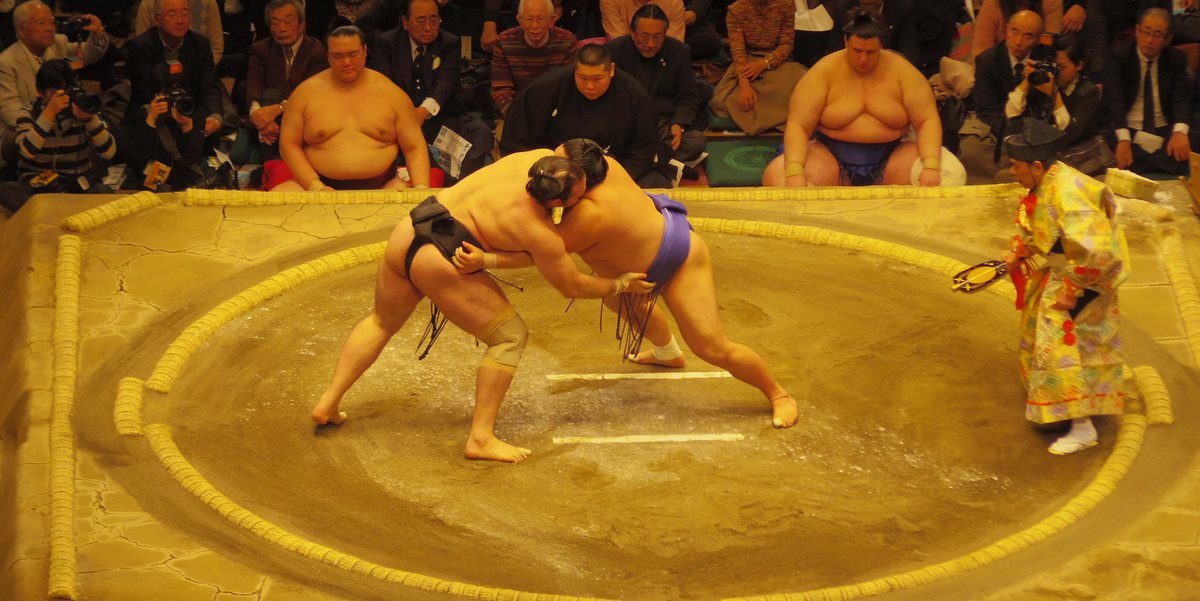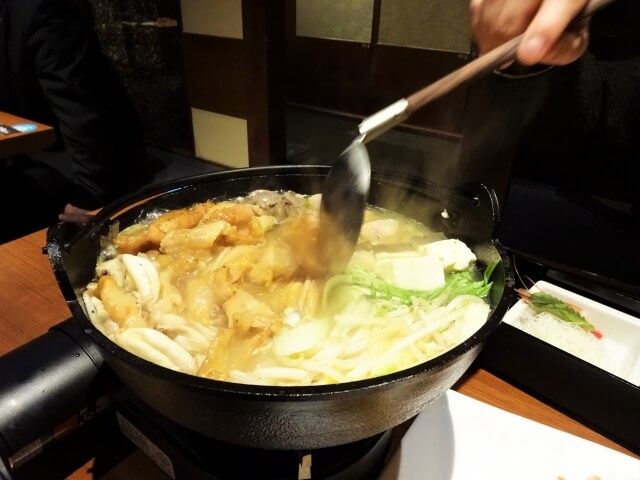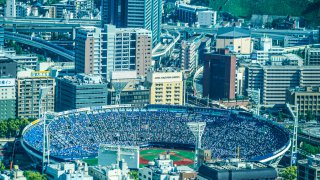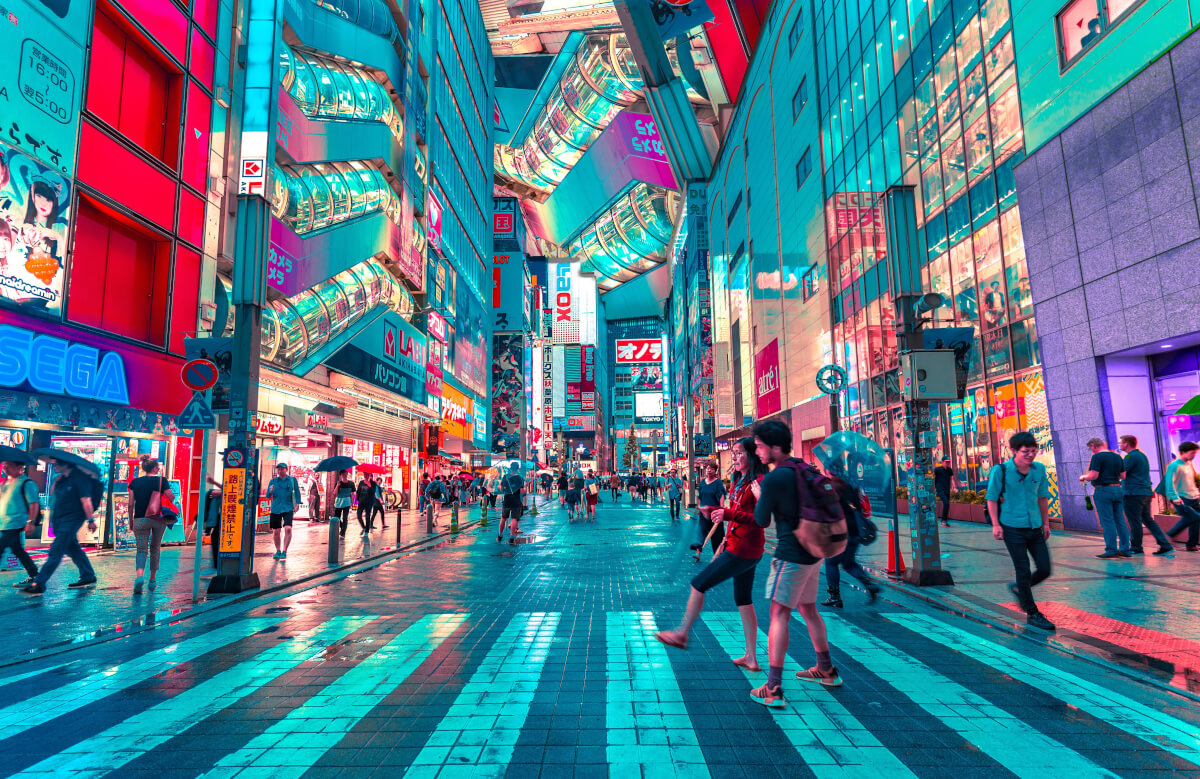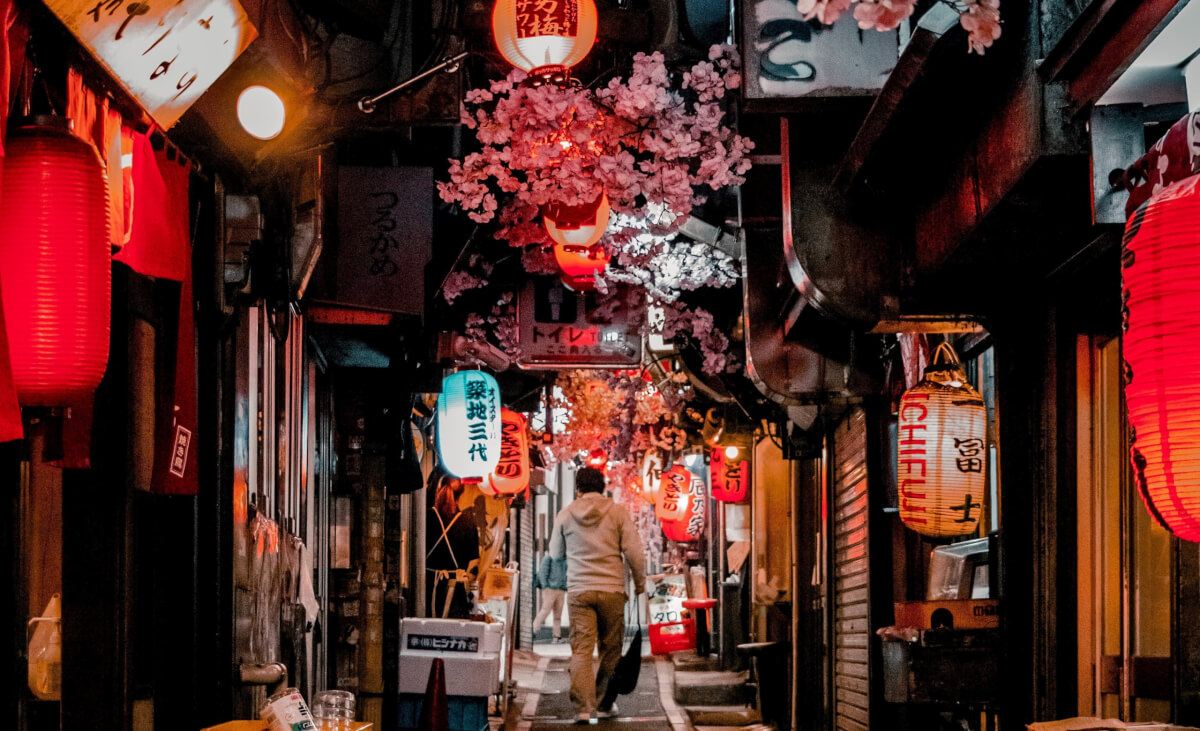Sumo (相撲, sumō), Japan’s famed national sport of style contact wrestling, is a very intense, popular activity amongst both locals and visitors (as a spectator that is). Not many people practice Japan’s national sport as the wrestlers need to adopt a very strict and disciplined lifestyle. The rules of sumo are fairly easy to understand and the matches tend to be short, but intense. Together with the many rituals and traditions, as well as excitement, the tournaments attract large crowds and tickets often sell out within the hour! When you visit Japan, we highly recommend that you try to squeeze in some time to watch this exciting sport. Let us explain everything that you need to know about it, as well as how to get tickets for the grand sumo tournaments!
▼Check out our Sumo Tours!
We offer special sumo tours including a grand tournament tour and daily morning practice tours at different sumo stables. Don’t miss out on a great opportunity to watch sumo up close with a local and knowledgeable English-speaking guide!
Tokyo Sumo Tournament Tour takes place on May 11-25, 2025. We offer the tours every day during the tournament!

- What is Sumo?
- Sumo Wrestlers: Rikishi
- Grand Sumo Tournaments
- How and When to Get Sumo Tickets
- Which Seats Should You Book?
- Fun Things to Do at Kokugikan during the Tokyo Tournaments
- Watch Sumo Wrestlers Practice at Sumo Stables
- Other Sumo Things to Do in Tokyo
- Sumo Tours in Tokyo
- Japan Wonder Travel Tours in Tokyo
- Other articles you might like
What is Sumo?
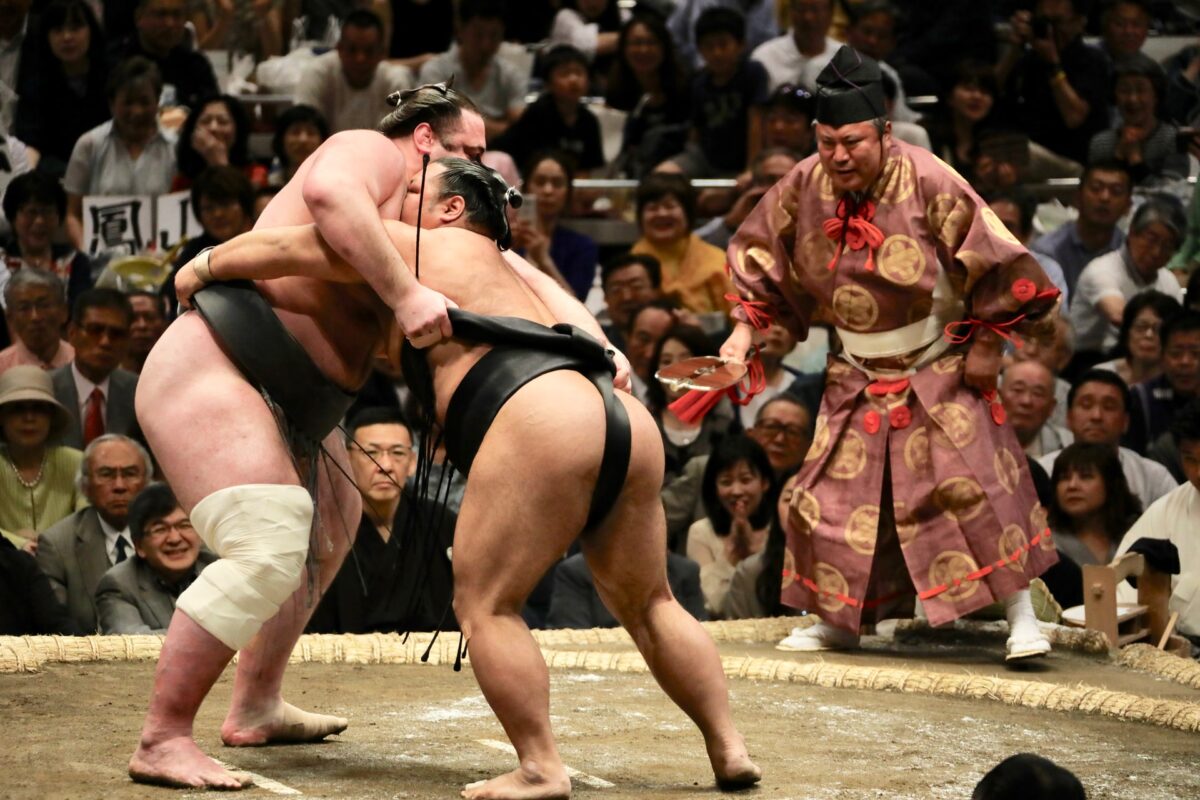
Sumo, or sumo wrestling, is a form of competitive contact wrestling that originated in Japan and is said to have first started hundreds if not thousands of years ago. To put it simply, the name of the game is trying to force your opponent out of the ring or get any body part other than the soles of their feet to touch the ground.
History of Sumo
In ancient times sumo originated as a performance to entertain the Shinto deities. Legends say that sumo was practiced by the gods, before being handed down to the people long long ago. However, sumo didn’t actually become a form of public entertainment until the 16th century, especially during the Edo Period. Before this, sumo wrestling was repurposed from a performance for the gods to a form of combat training that was used by samurai.
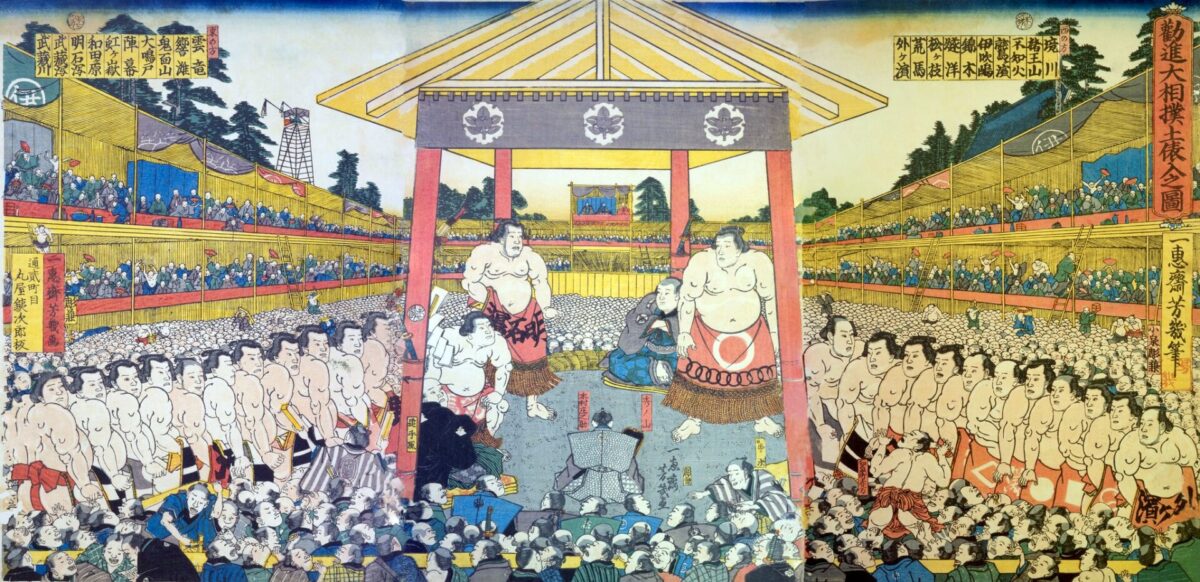
Once it started to get bigger and more popular among the public, it wasn’t uncommon for daimyo to sponsor individual wrestlers. It is said that the famous daimyo and one of the “Unifiers” of Japan, Oda Nobunaga, became a big fan of the sport and even held a tournament in the 1570’s in which 1500 wrestlers participated! This is thought to be where the Dohyo (ring) made its first appearance, which is a major part of the sport today. Sumo had its ups and downs over the next few hundred years but made a big comeback in the late 1800’s when a tournament was organized by Emperor Meiji. From here on out small rules/additions were put in place and it became the sport it is today.
Sumo Wrestling Rules and Customs
There are many rules/rituals in Sumo that have their roots in religion, most relating to Shintoism. As previously mentioned, the way that a wrestler wins a match is by getting their opponent out of the ring or getting any body part other than the soles of their feet to touch the ground in the ring. There are many ways of “winning” a match, or kimarite (winning techniques), as well as a few that can get you disqualified.
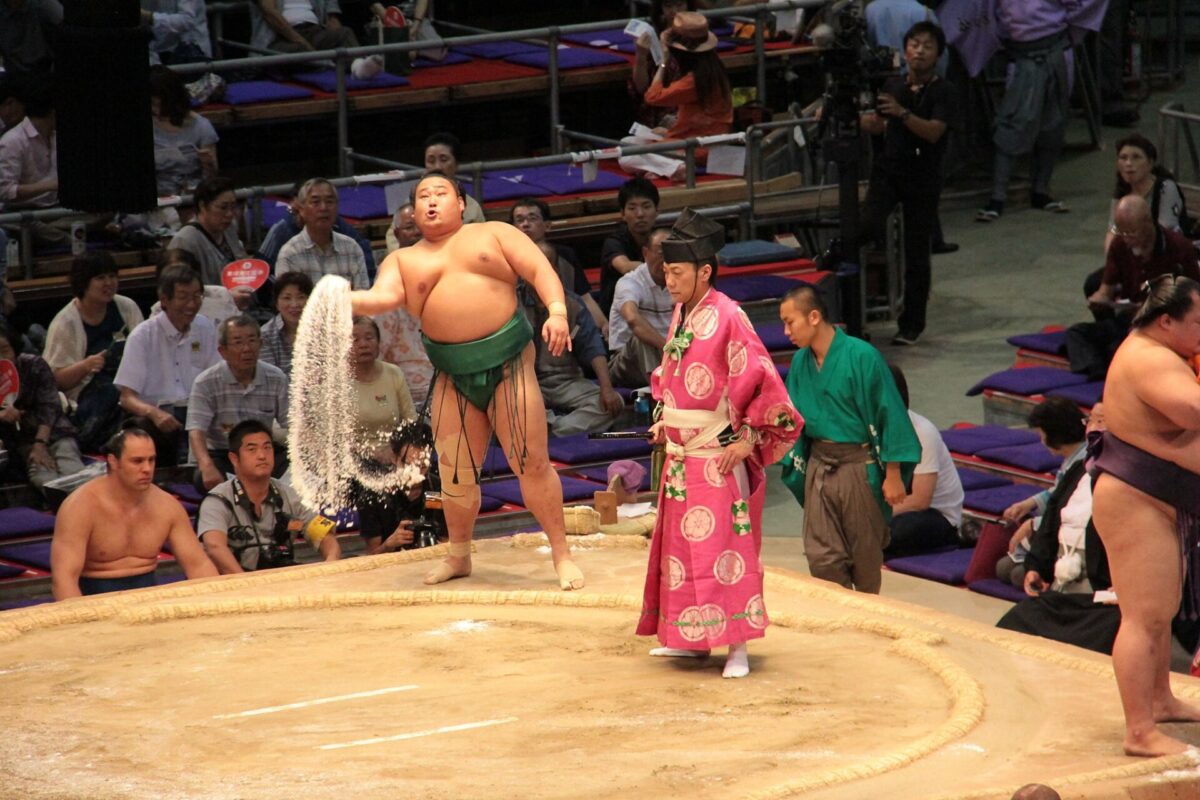
The rituals, customs, and ceremonies of sumo have a long history and are still a huge part of the sport today. You may have seen a few of the main ones such as a ceremony when entering the dohyo (ring) in their flashy mawashi (loincloth), tossing salt into the ring to purify it, rinsing of the mouth before a bout, shikiri (warm up before the bout), as well as the acceptance of their win that often comes with a nice chunk of cash.
Sumo Wrestlers: Rikishi
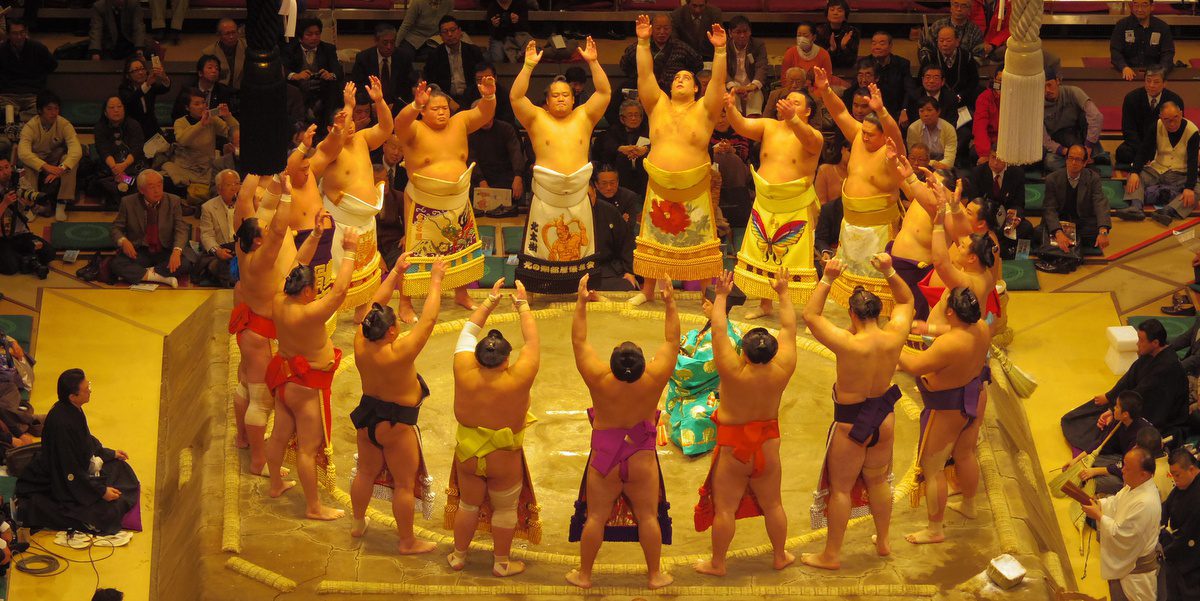
The appearance of the rikishi is very striking and traditional; their samurai-like hairstyle chonmage originates from the Edo period. The samurai used chonmage to hold their helmets steady atop their heads in battle. Also, the only piece of clothing is the belt called the mawashi. The mawashi is worn before, during, and after the game. The upper-ranked professional wrestlers wear a keshō-mawashi during the ring entry ceremony.
Divisions, Ranking Hierarchy
The professional rikishi are divided into six divisions. The wrestlers are classified in a ranking hierarchy [banzuke], that is updated after each tournament based on the wrestlers’ performance. The top Makunouchi division is subdivided into five ranks: Yokozuna at the top, followed by Ozeki, Sekiwake, Komusubi, and Maegashira. The second division is called Juryo.
Fun fact: in sumo there are no weight restrictions or classes, meaning that your opponent can be many times your own size! As a result, weight gain is an essential part of sumo training.
Grand Sumo Tournaments
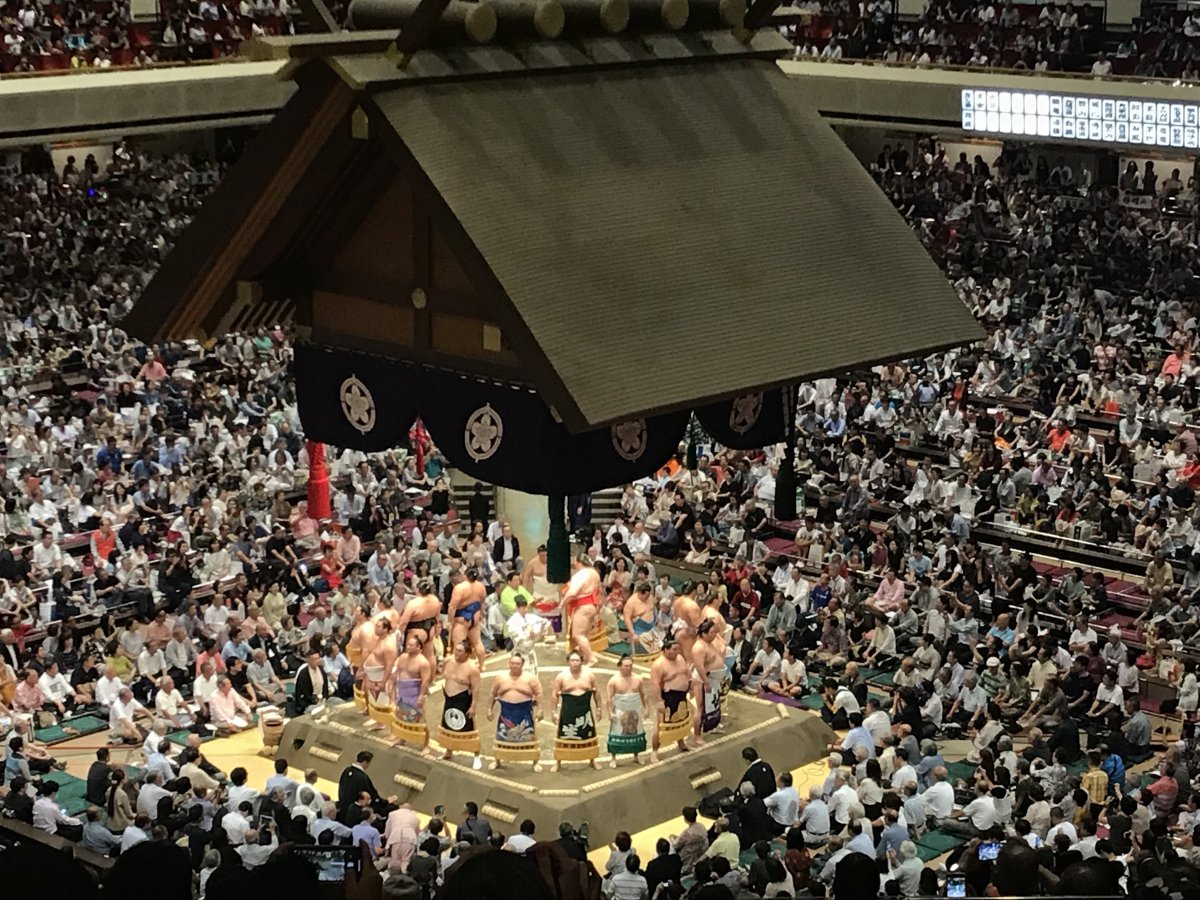
Every year, six Grand Sumo tournaments “本場所 (Honbasho)” are held. Occurring on the odd months, each tournament starts and ends on a Sunday and last 15 days.
- January, May, and September: Ryogoku Kokugikan in Tokyo.
- March: Osaka
- July: Nagoya
- November: Fukuoka
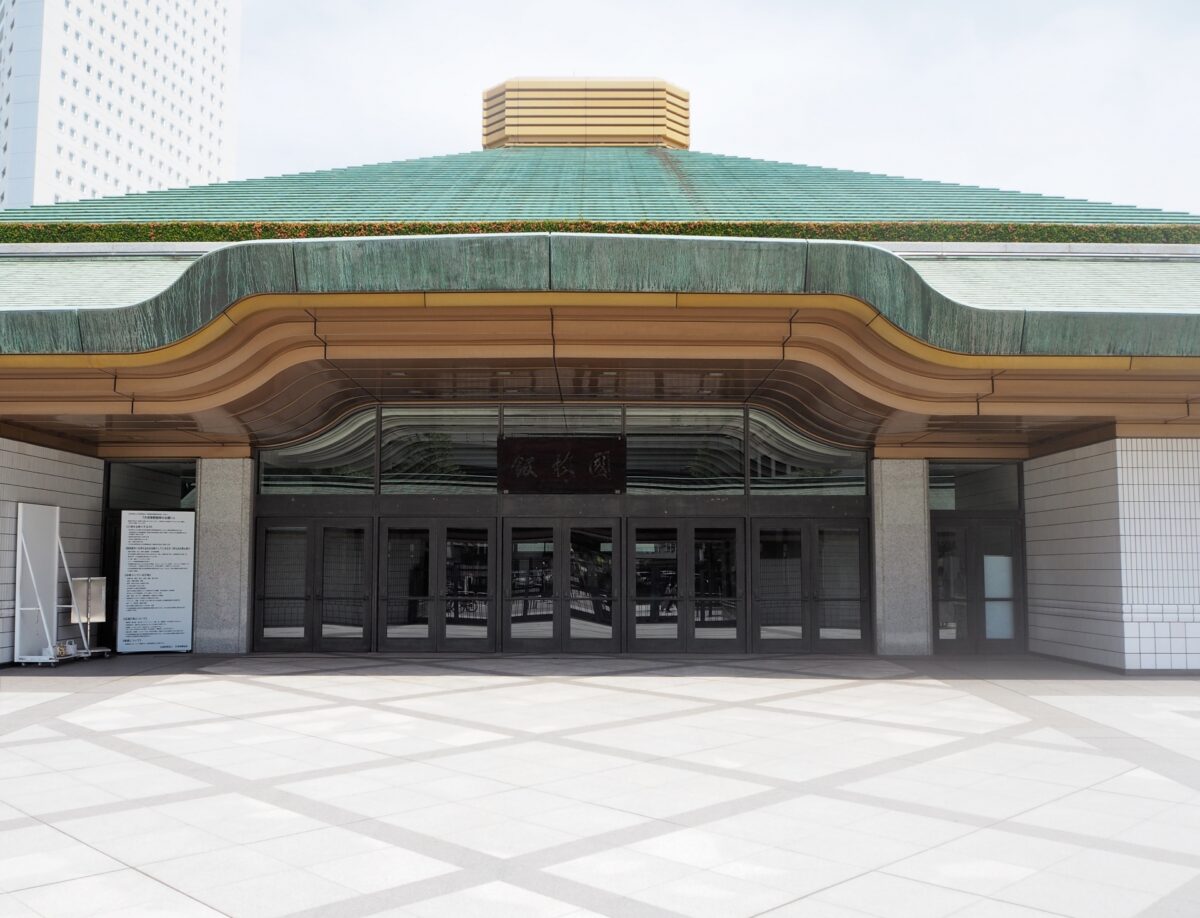
Tournaments start at 8:00am on the active days with matches between lower-ranked wrestlers. Around 3:30pm the ring-entering ceremony (dohyō-iri) of stronger wrestlers starts. Reserve at least three hours and to make the most out of your experience we recommend you go together with a guide. A guide will tell you about the history and traditions of sumo so you understand the sport better and have a great experience.
▶Grand Sumo Tournament Guided Tours
How and When to Get Sumo Tickets
The official tickets are usually released one month before the tournament’s first day. However, getting tickets can be tricky as they are very popular and often sell out within the hour!
Official website: https://sumo.pia.jp/en/
But don’t worry, you can still get tickets for the tournament! We offer a sumo tournament tour in which one of our trusty English-speaking guides will take you to the tournament and explain everything you need to know about sumo. And rest assured, the tickets are included in the tour!
2025 Grand Sumo Tournament Schedule and Ticket Availability
| Tournament | Location | Date | Tickets available from Japan Sumo Association | Tickets available from Japan Wonder Travel |
| The January Tournament | Tokyo | January 12, 2025 – January 26, 2025 | December 7, 2024 | November, 2024 |
| The March Tournament | Osaka | March 9, 2025 – March 23, 2025 | February 8, 2025 | January, 2025 |
| The May Tournament | Tokyo | May 11, 2025 – May 25, 2025 | April 5, 2025 | March, 2025 |
| The July Tournament | Nagoya | July 13, 2025 – July 27, 2025 | May 17, 2025 | April, 2025 |
| The September Tournament | Tokyo | September 14, 2025 – September 28, 2025 | August 9, 2025 | July, 2025 |
| The November Tournament | Fukuoka | November 9, 2025 – November 23, 2025 | September 20, 2025 | August, 2025 |
May 2025 Sumo Tournament Tours with Ticket On Sale Now!
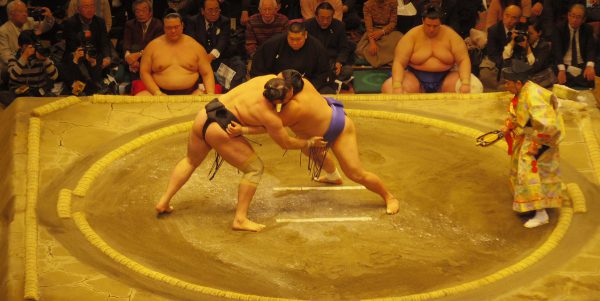
Those of you who visit Japan during one of the six Grand Sumo Tournaments should certainly take the opportunity to go. It will surely be one of the most exciting things you do in Japan and allow you to feel the atmosphere of sumo culture! We offer tours available every day during the tournament. Book the tour now before they sell out!
Date: May 11th – 25th, 2025
Location: Osaka Edion Arena
Time: 8:00am – 6pm
Which Seats Should You Book?
Ringside Seats
Ringside seats are the seats right in front of the dohyo and are the closest to the action. You will have the chance to see the wrestlers up close and these seats can make for a great experience, and the wrestlers may even fall on top of you! However, these seats can be very hard to get and are often reserved for people associated with the sumo and VIPs. They are more expensive than the other options, but aren’t impossible to obtain.
Box Seats
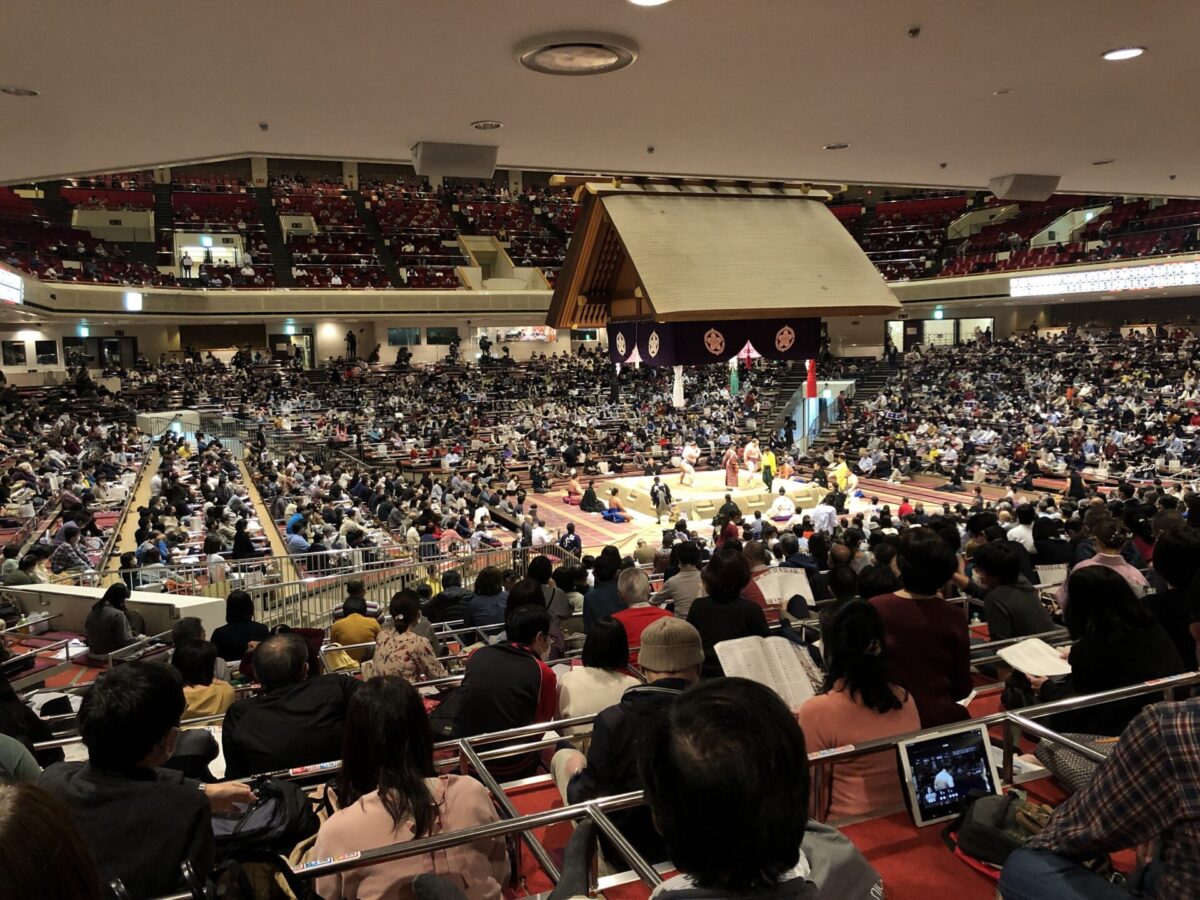
Box seats are all on the first floor and also give you a great view of the dohyo and bouts. These seats come in a set of 4 seats, and you have to buy them as a package. They are cheaper than the aforementioned ringside seats, and can also be a little tough to get depending on the tournament and day. These seats are divided into 4 main sections; S, A, B, and C seats. The S seats are closest to the dohyo right behind the ringside seats, and the C seats are at the very back of the first floor. Be aware that these are cushion seats, there is no backrest, and you need to take your shoes off when sitting here.
Upper-Level Seats (chair seats)
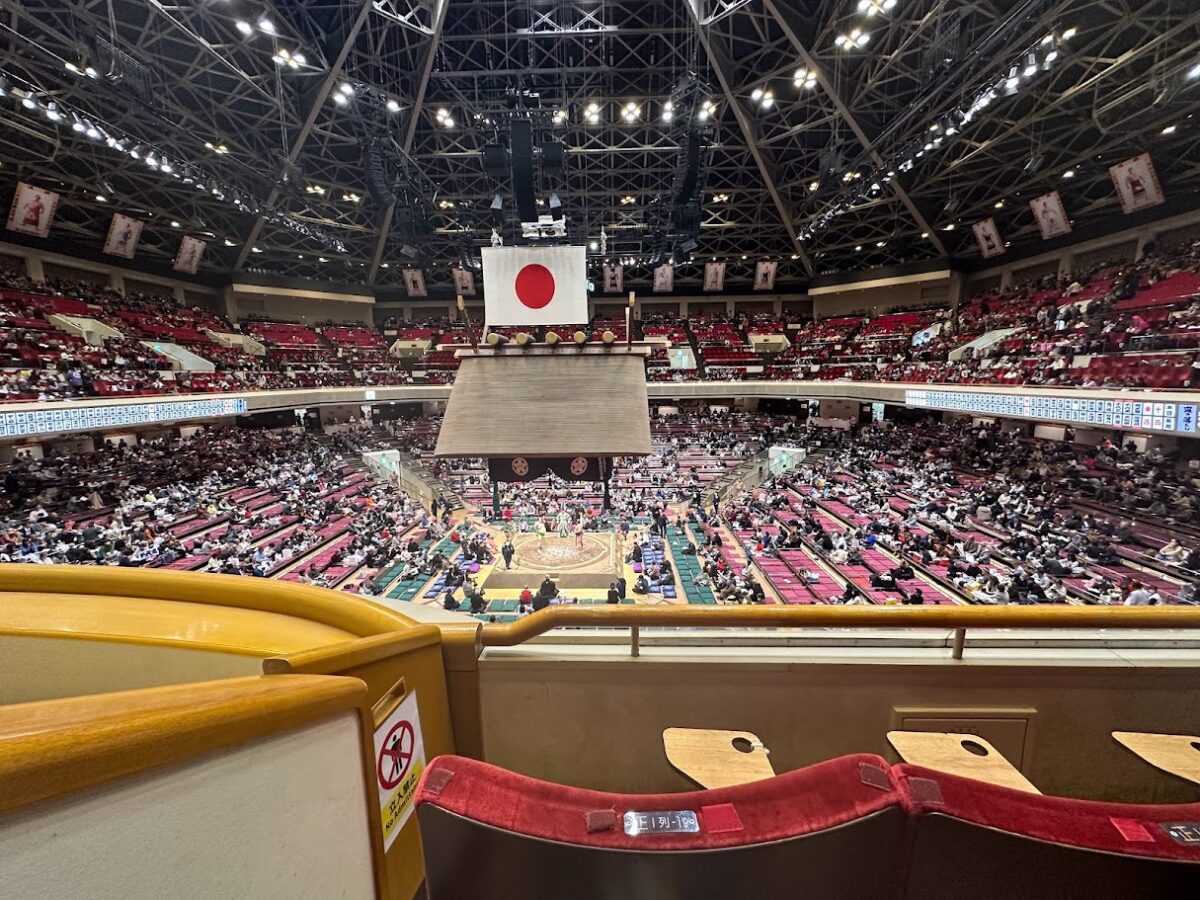
The most common and readily available type of seating is the stand seats which are all on the 2nd floor of the arena and are individual fold-down chair seats. These are the least expensive seats and are usually divided into 4 different sections; S, A, B, and C seats. The S seats are at the very front of the 2nd floor seating and the C seats are at the very top. Although you may think that these might be the worst seats as they are the most high up, the arena itself isn’t all that big and you will have a pretty good view of the dohyo no matter where you are watching from.
Fun Things to Do at Kokugikan during the Tokyo Tournaments
During January, May, and September, the grand tournament will be held at the stadium called Kokugikan in Tokyo. It may sound familiar to you that eat hotdogs at the baseball stadium, but there are unique ways to enjoy watching sumo at Kokugikan during the tournament as well! Here we introduce how to better enjoy the grand tournament in Tokyo.
Eat a Bowl of Chanko Nabe
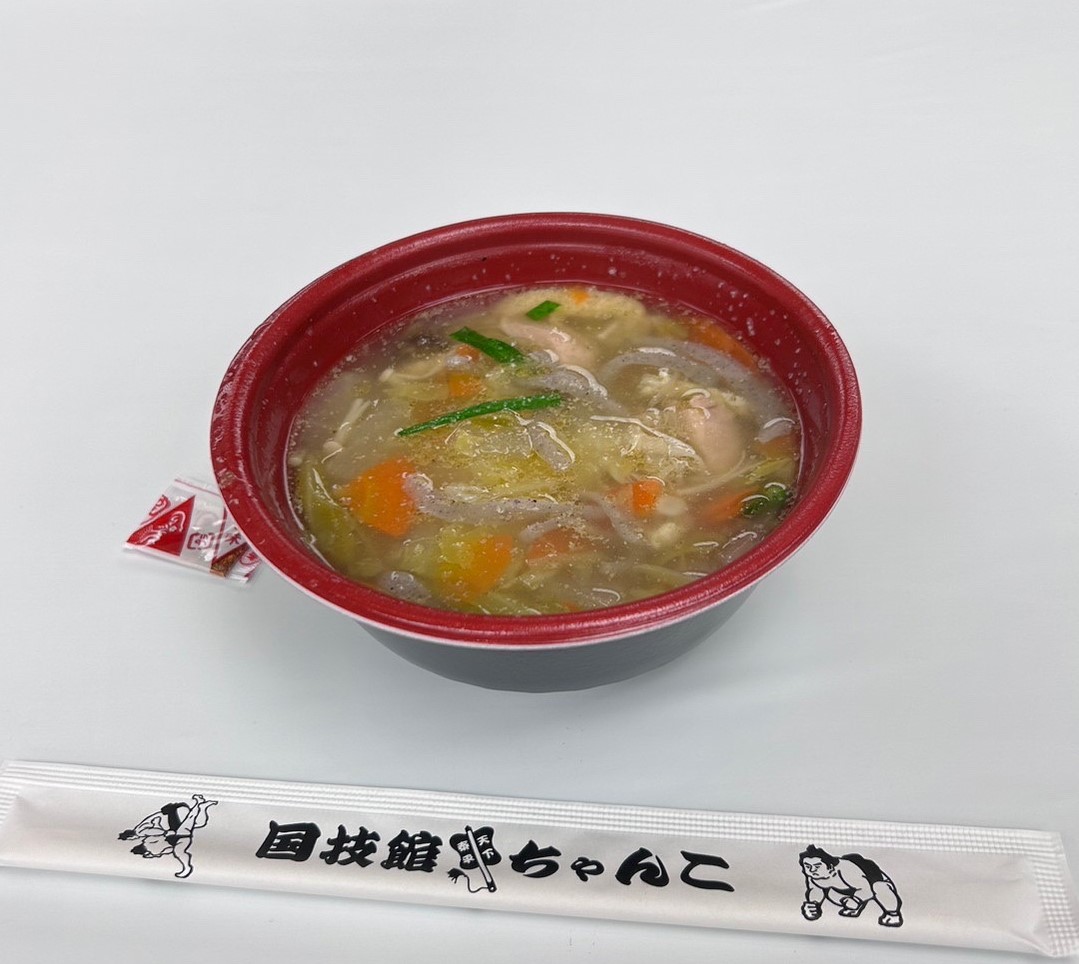
As mentioned earlier, chanko nabe is the famous sumo wrestler food that is eaten by them pretty much on a daily. It’s great to go to an actual restaurant and eat a big bowl of the delicious hot pot, but if you are in Kokugikan, you can try a small bowl on the spot for only 500 yen! Head to the basement where they serve the delicious hot bowl of deliciousness for everyone.
Buy Sumo Goods
When you make the trip to Kokugikan, you will want something to remember it by. There are plenty of sumo goods such as each wrestler’s towels, magazines, keychains, T-shirts, snacks, and much much more. Leave the arena with a full belly, in a good mood, and with something that you will always remember the day by.
See the Sumo Trophy Case
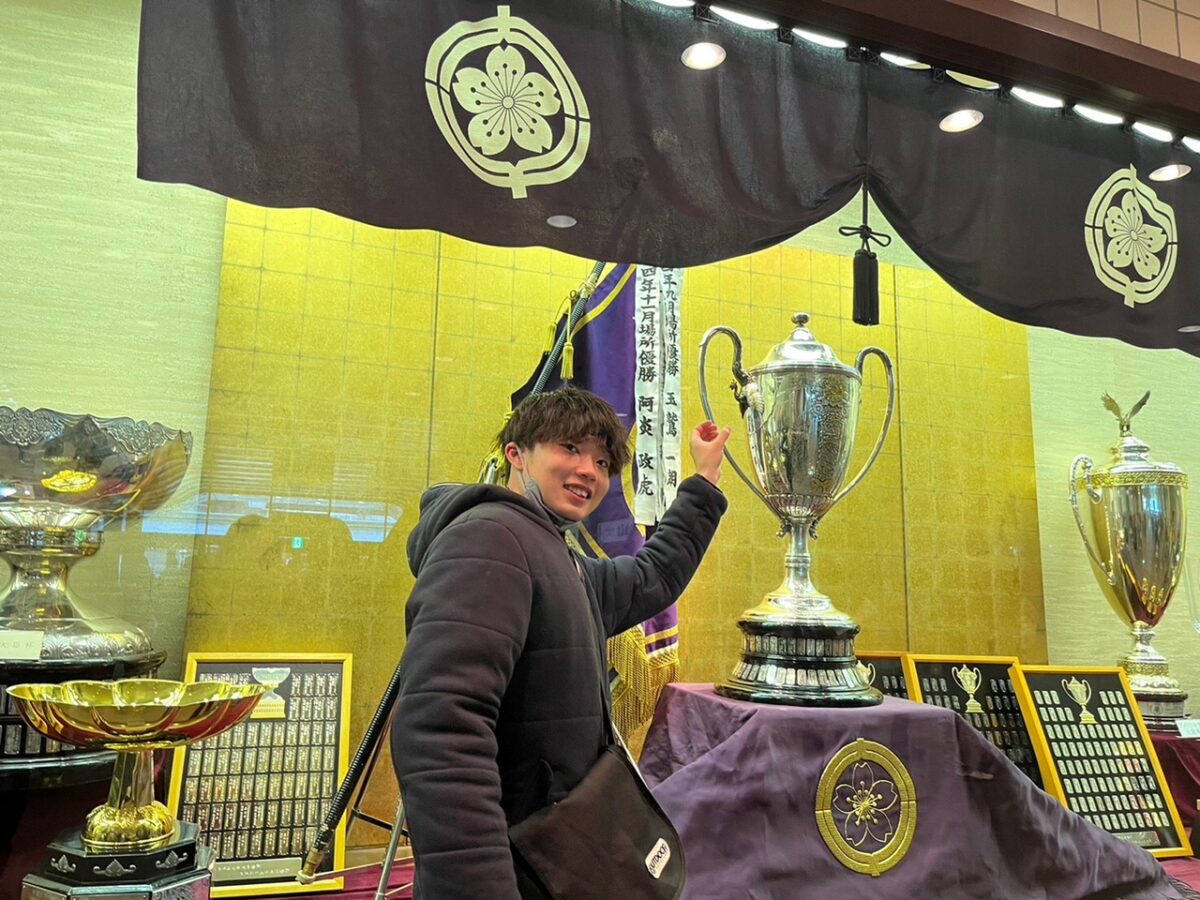
As soon as you walk into Kokugikan, one of the first things you will see is the big trophy case. This is where the tournament trophy sits until the end of the tournament when it is awarded to the winner. It can be fun to take a picture alongside the trophy before it is taken out of the case at the end of the tournament.
Drink Beer and Eat Tasty Stadium Food
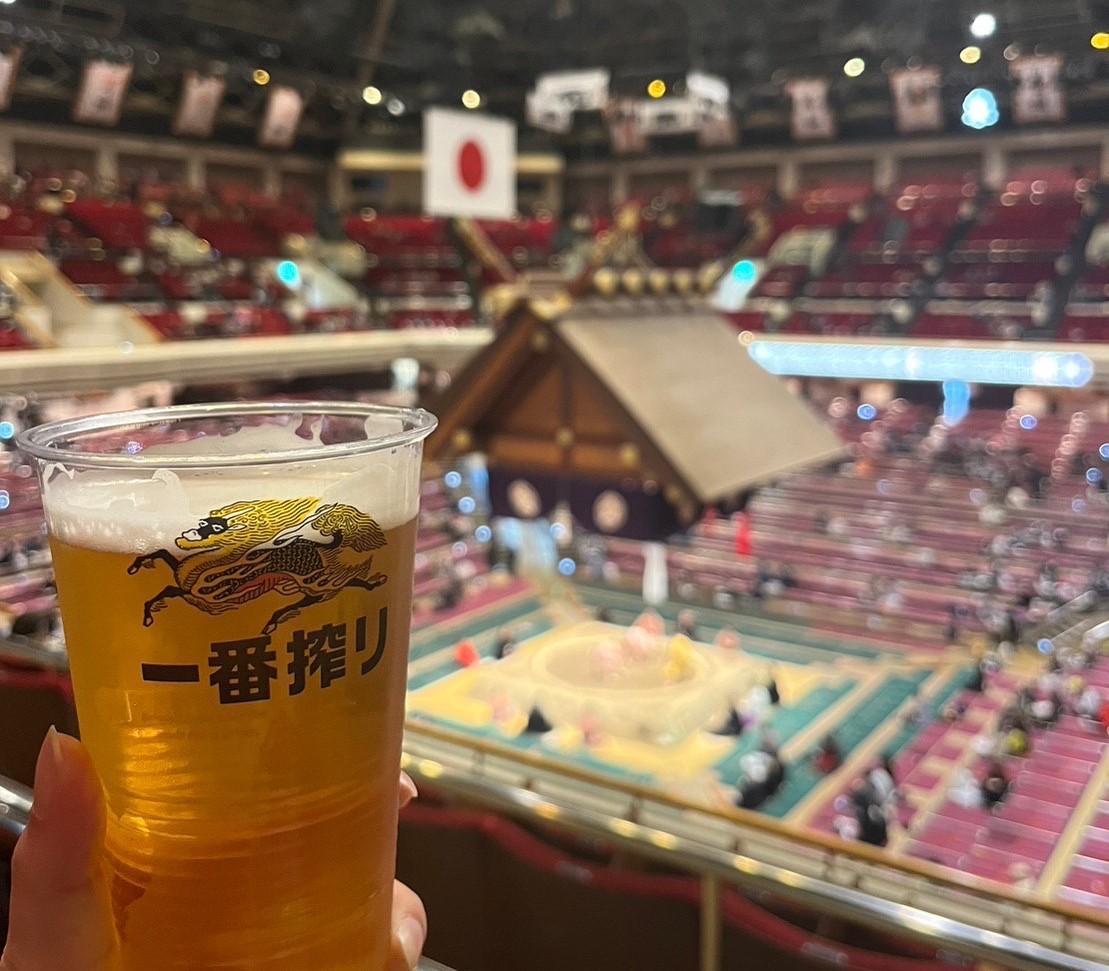
If you are planning on spending a good chunk of your day at the arena, you will surely get hungry and thirsty! Luckily, there are lots of concessions that have delicious food and cold drinks. They sell world-famous yakitori that is grilled at Kokugikan, as well as top-notch katsu sandwiches, ice cream, and french fries. And what would a sports event be without some cold beer straight from the tap? There is plenty of beer and other drinks sold throughout the arena as well.
Take a Picture with a Sumo Cutout
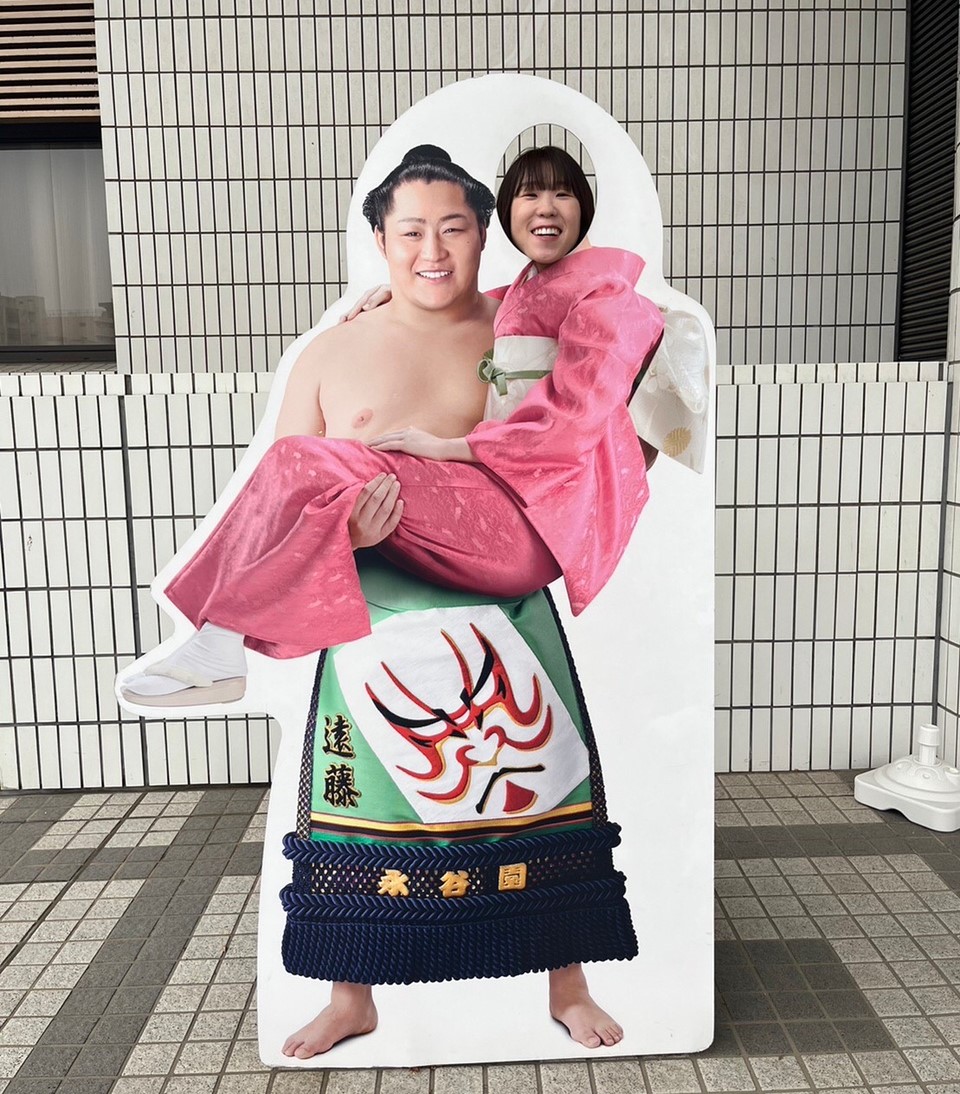
Right outside of the Kokugikan building you will find a number of different sumo wrestler cutouts where you can have your picture taken. This always adds to the fun and can be another great way to remember the day.
Yagura Daiko (Taiko Drumming)
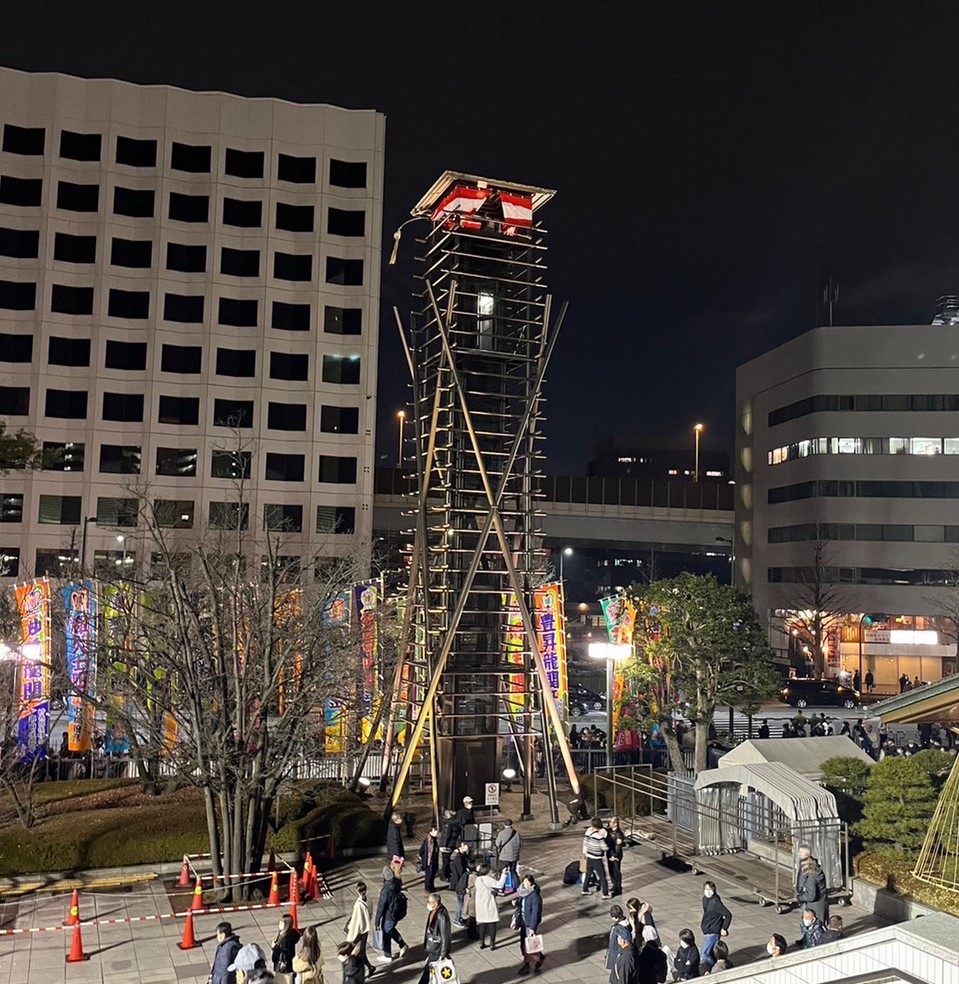
Before the start of the tournament for the day, and after all of the Makunouchi bouts are over, you will hear the beating sound of taiko drums outside of the arena. This is a great way to both start and end the day, and it only adds to the amazing sumo atmosphere that Ryogoku and Kokugikan hold.
Watch Sumo Wrestlers Practice at Sumo Stables
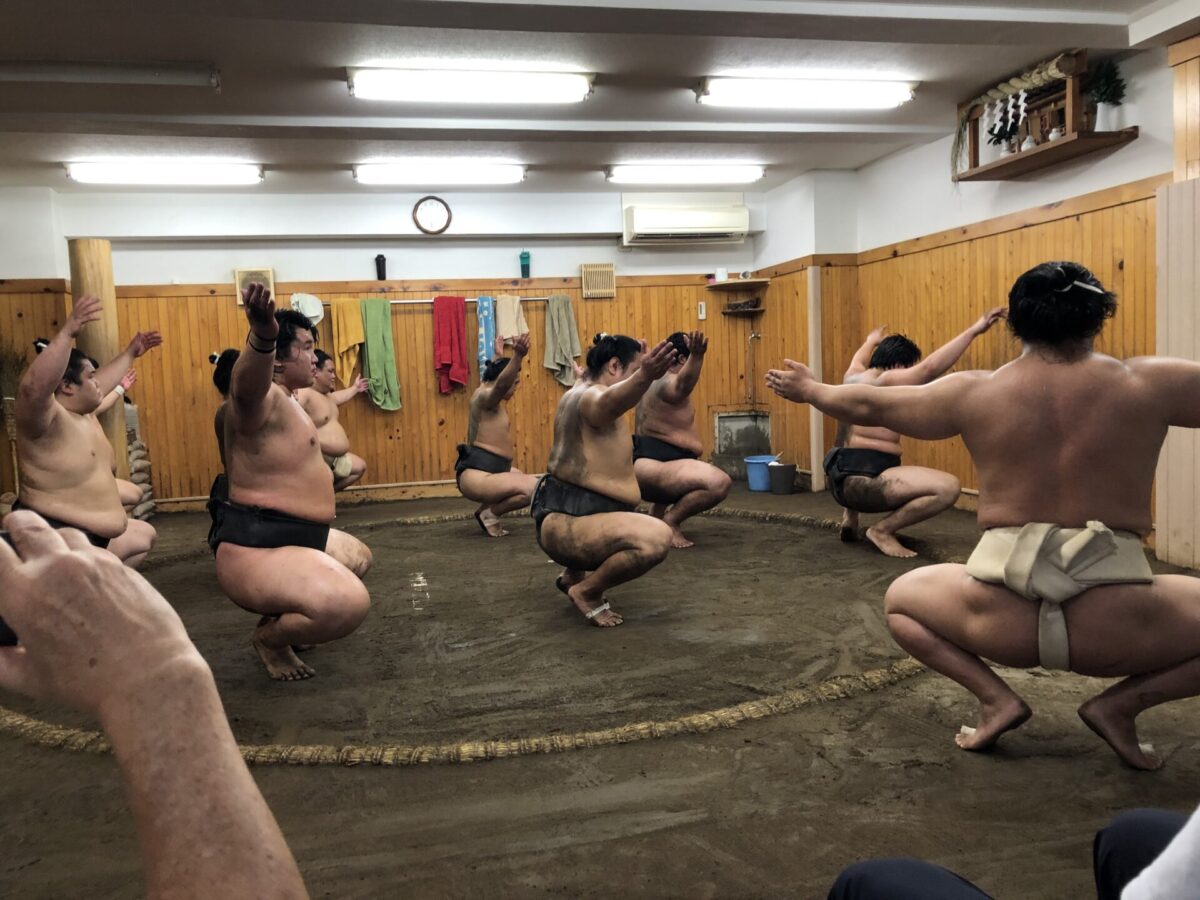
Sumo wrestlers (rikishi) live together in a sumo stable under the strict regime of the stable master. The sumo stable is the place where they live, train, and sleep together. Almost every morning they practice and have serious and energetic practice matches. In the greater Tokyo Region, approximately 40 sumo stables can be found, many of which are located in the Ryogoku area.
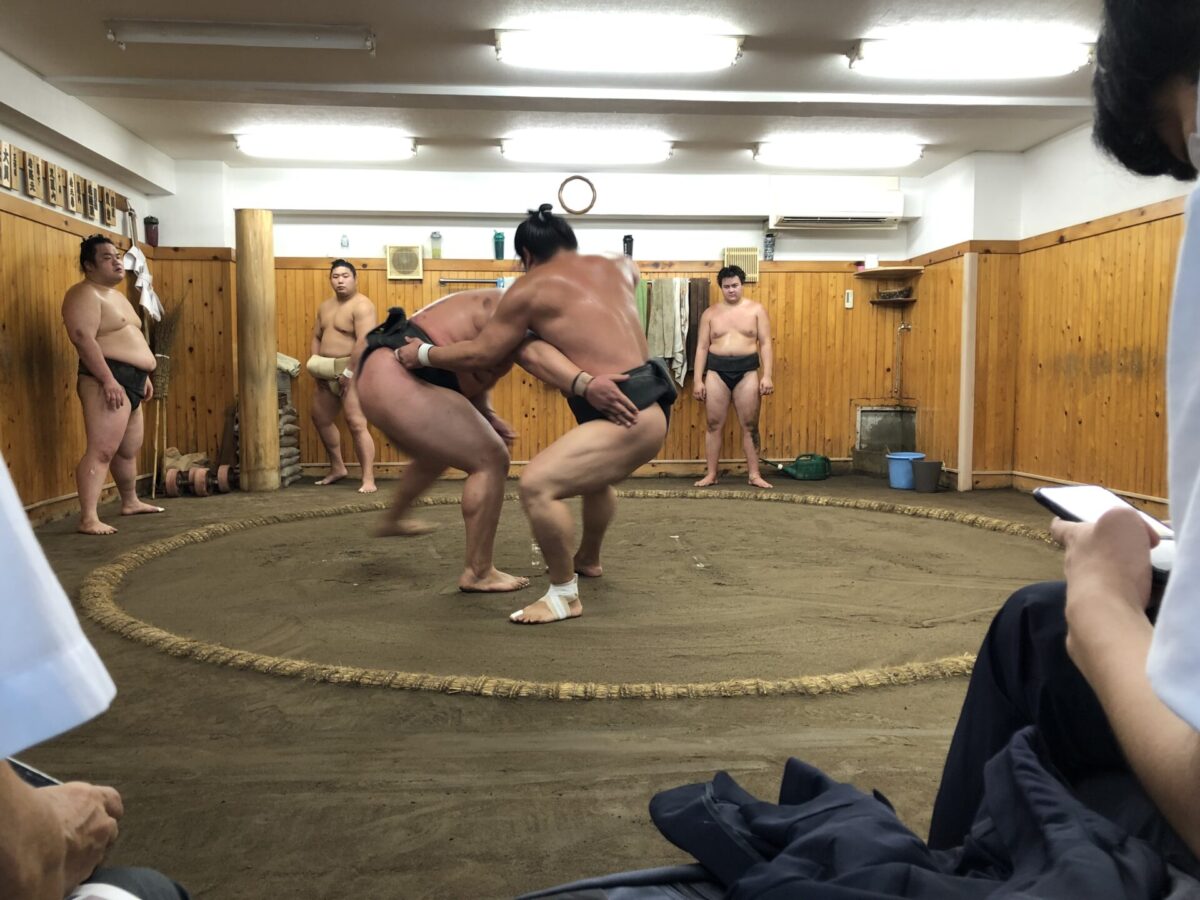
How to Visit a Sumo Stable
A small number of sumo stables welcome people to come and see the morning practice. However, there are strict rules and manners to being the audience. All sumo stables require that tourists are accompanied by someone who is fluent in Japanese and familiar with the customs of the sumo world. Furthermore, visitors are expected to follow the house rules strictly and not disturb the training session. In practice, it is very difficult for foreign tourists to find a way to visit a stable on their own. Instead, the recommended way to witness a morning practice is to join a guided tour.
See all of our sumo stable tours here
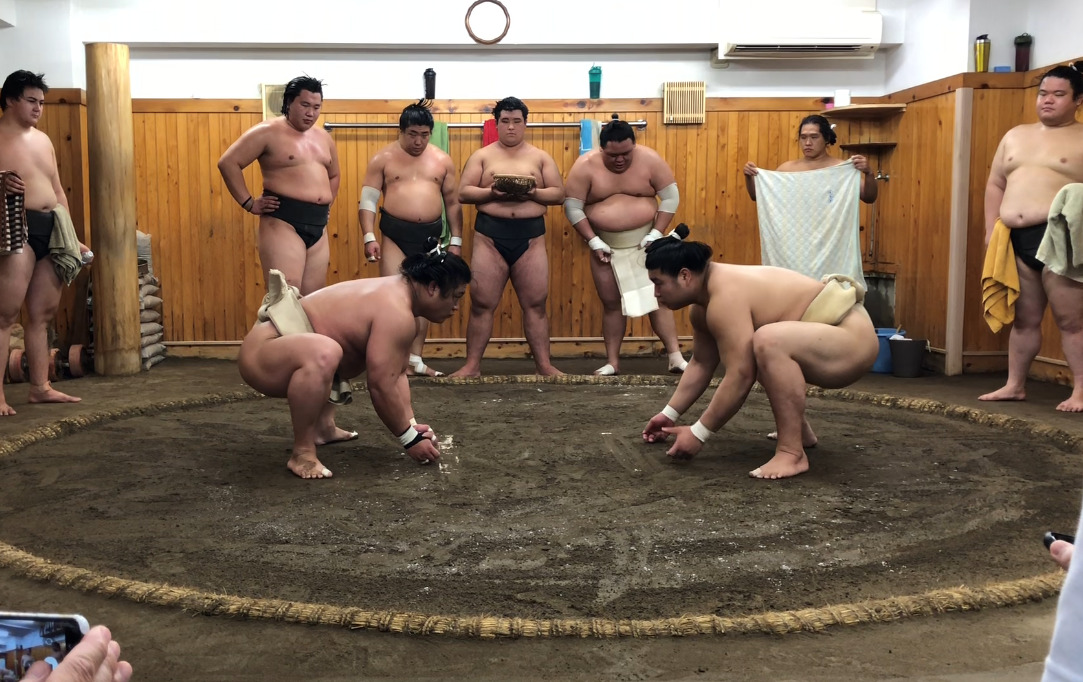
*Please note that during the Grand Sumo Tournaments, there is morning practice but it finishes earlier than usual. And during the tournaments in Osaka, Fukuoka or Nagoya, there is no morning practice in Tokyo.
Try Wrestler’s Staple Food, Chanko Nabe (Hot Pot)
In addition to your visit to the stables, you can also experience the food culture of sumo. Sumo wrestlers follow a strict diet, taking in approximately 20,000 calories each day! The most popular food cooked and eaten by sumo wrestlers is Chanko Nabe, or Hot Pot. This dish is rich in protein and includes a variety of ingredients that are soaked into warm soup.
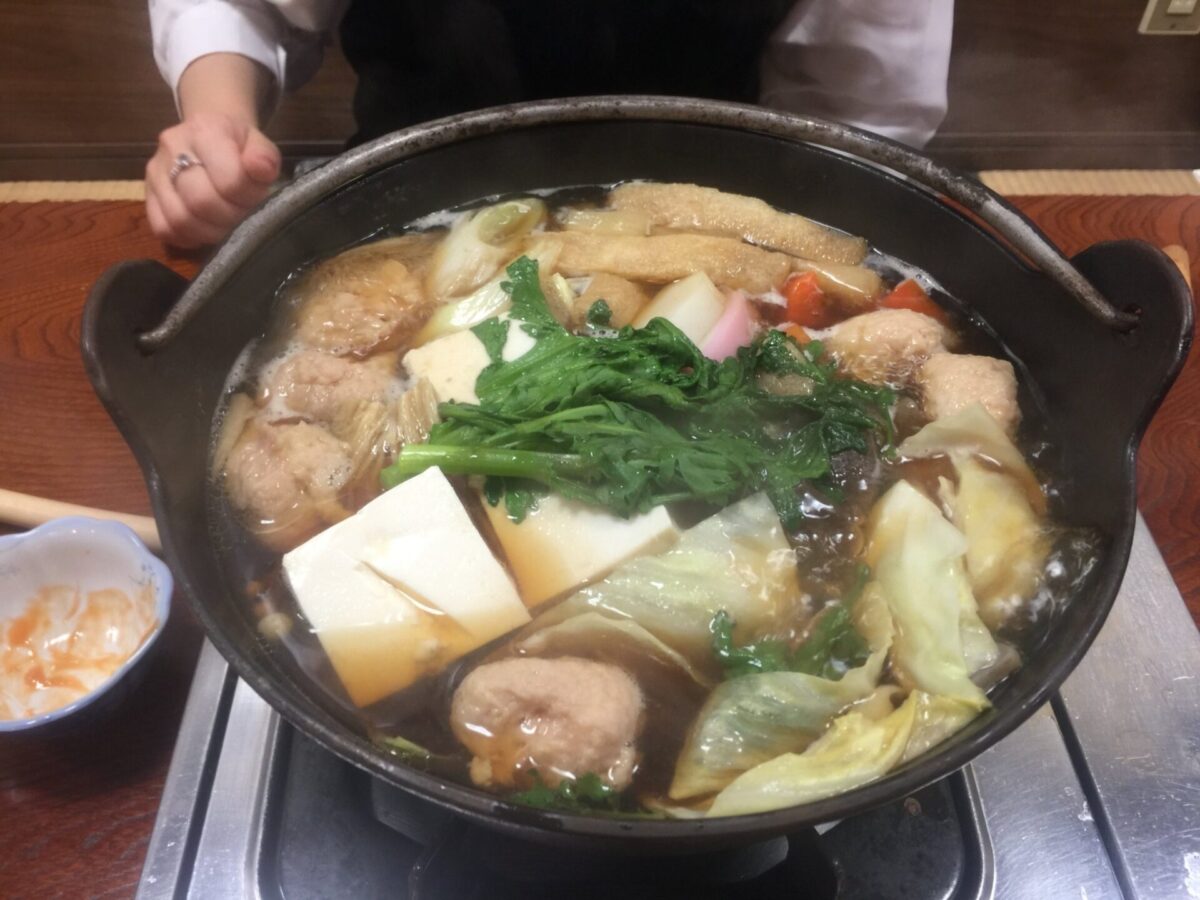
Other Sumo Things to Do in Tokyo
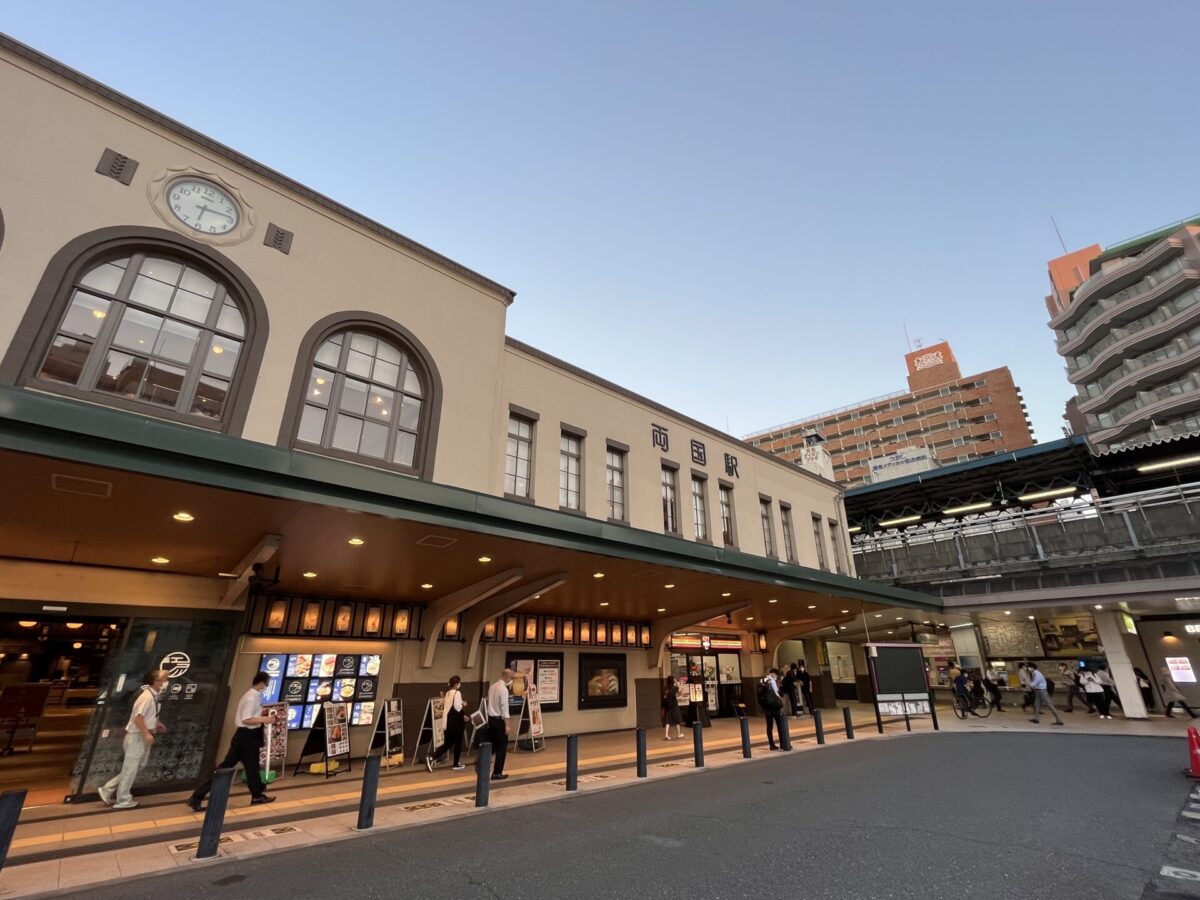
For centuries, Tokyo has been the sumo capital of Japan, especially Tokyo’s Ryogoku district. In Ryogoku many sumo stables are located as well as the Kokugikan sumo stadium where three of the six annual tournaments are held. In this district, you will be able to find many sumo-related attractions.
Sumo Museum
The Sumo Museum is housed inside the Ryogoku Kokugikan Sumo Hall. The museum has a wide range of items and artifacts related to the history of sumo on display, from woodblock prints and official listings of the rank, and banzuke, to the ceremonial aprons worn by the great Rikishi of the past.
Sumō Museum
1-3-28 Yokoami, Sumida, Tokyo 130-0015
Open weekdays 10am – 4:30pm
www.sumo.or.jp
Ekoin Temple
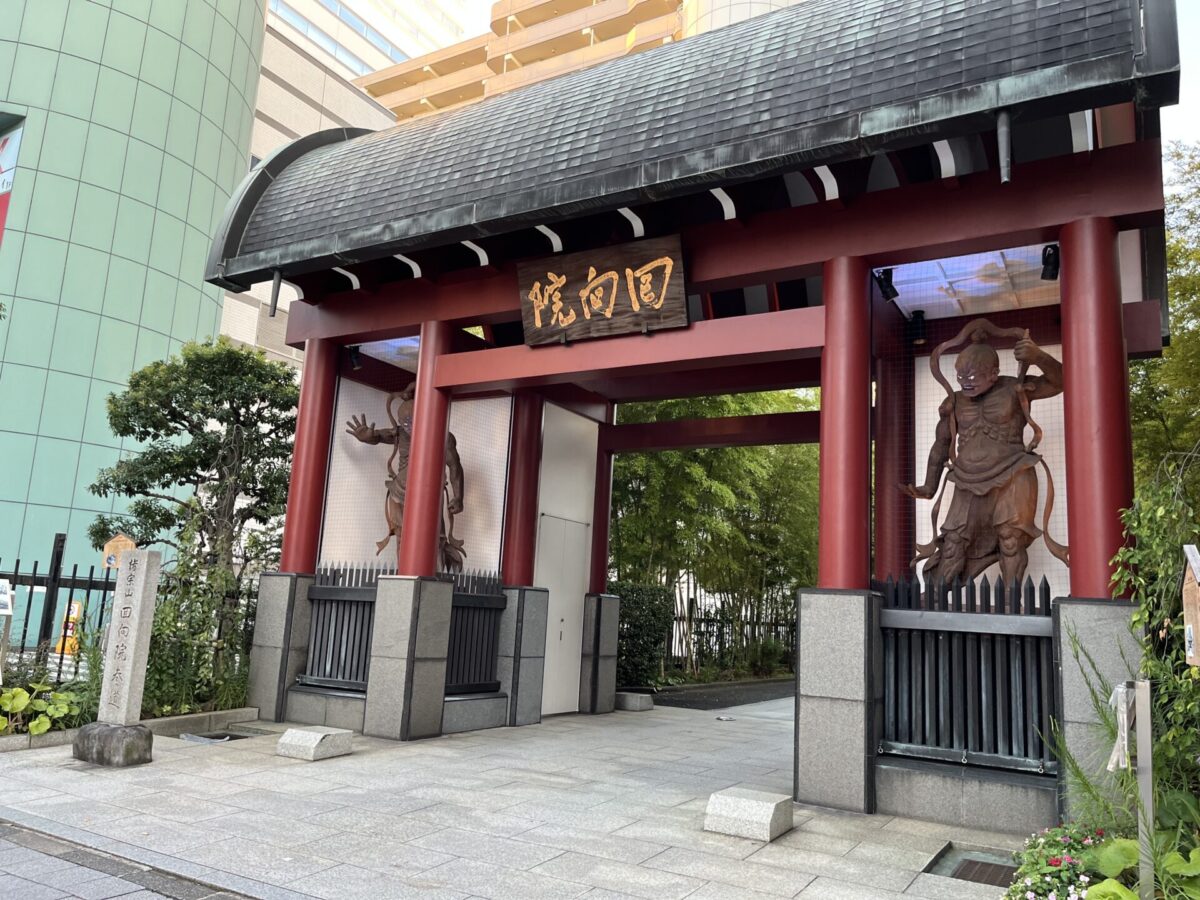
The Ekoin Temple is the spiritual home of sumo and has hosted many tournaments before the first Ryogoku Kokugikan was built in 1909. Those days, the sumo tournaments were held outdoors at the temple, just a short walk from Ryogoku Station. Today, you can see a stone monument on the temple grounds that honors past rikishi and stable masters.
Ekoin temple
2-8-10 Ryōgoku, Sumida City, Tokyo 130-0026
Open daily 9am – 4:30pm
http://ekoin.or.jp
Sumo at Universities
Some universities have sumo club and they practice hard. These students are the future of sumo wrestling in Japan and the training is equally to the professional sumo wrestling training. It is a unique experience to see sumo by future professional sumo wrestler.
Regional Sumo Tournament
Every year sumo wrestlers will go on a provincial tour that covers different areas. These always take place outside the Tokyo Grand Sumo Tournament period. Please check the official website of Nihon Sumo Kyokai for the up-to-date schedule.
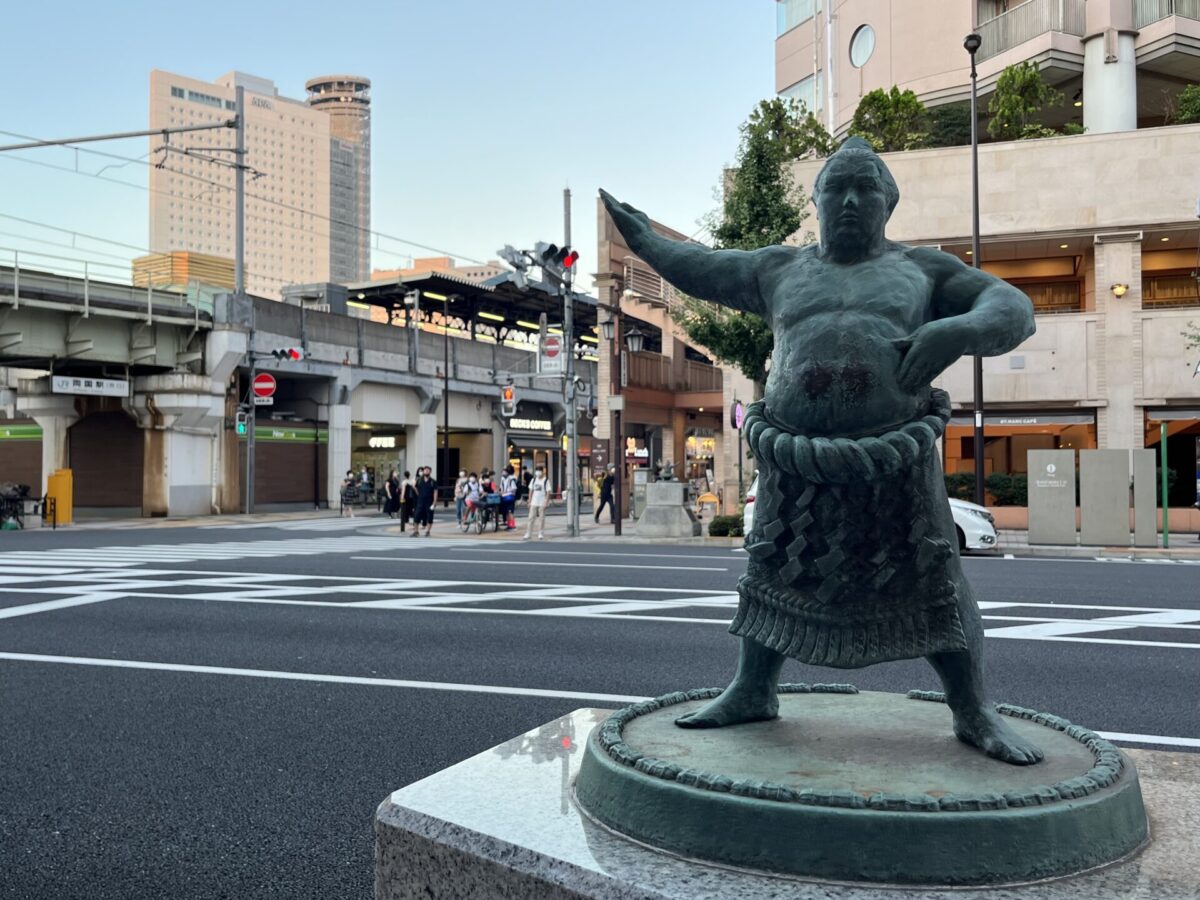
Sumo Tours in Tokyo
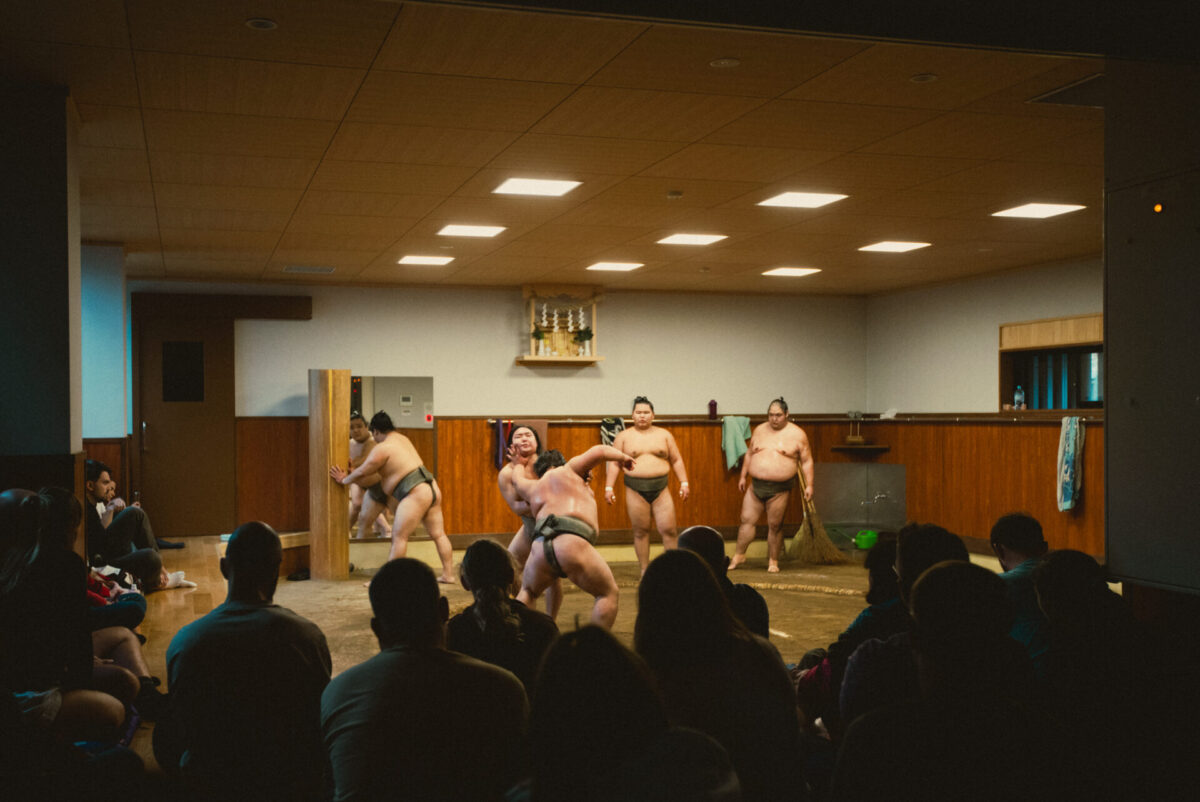
Sumo wrestling is something that you can only experience in Japan. Being the location for 3 of the 6 tournaments throughout the year, Tokyo is the best place to immerse yourself in this fascinating part of Japanese culture. Sumo is a pretty complex sport and therefore it is better to go see a Tournament is with a fun and knowledgeable English-speaking guide. There are tours where you can see one of the 6 national tournaments, but there are also tours where you can watch the Rikishi(wrestlers) up close during their morning practice!
Japan Wonder Travel Tours in Tokyo
Japan Wonder Travel is a travel agency that offers guided tours throughout Japan.
From private walking tours to delicious Food and Drink tours, we can help organize the best tours just for you! If you want to explore Japan and learn more about the history and backstories of each area you are traveling in, our knowledgeable and friendly guides will happily take you to the best spots!
In addition, we can provide you with any assistance you may need for your upcoming trip to Japan, so please feel free to contact us if you have any questions or need some help!
▶Tokyo Tsukiji Fish Market Food and Drink Tour
Explore the most lively and popular fish market in Tokyo, where you will have the chance to try some of the local’s favorite street foods and sake along with your friendly English-speaking guide!

▶Tokyo 1–Day Highlights Private Walking Tour (8 Hours)
There’s no better way to explore an area than taking a tour with a knowledgeable local guide. You will have the chance to learn about the history and interesting background stories of Tokyo, as well as discover some hidden gems which can be hard to do without a guide.

▶Shinjuku Bar Hopping Tour: Experience Tokyo’s Nightlife in Izakaya
Check out the best spots in Shinjuku while bar hopping through the lively and vibrant area. Try some delicious local food and drink as you explore the narrow yet photogenic alleys that the town has to offer. Experience Japanese izakaya culture and drink in Shinjuku like the locals!
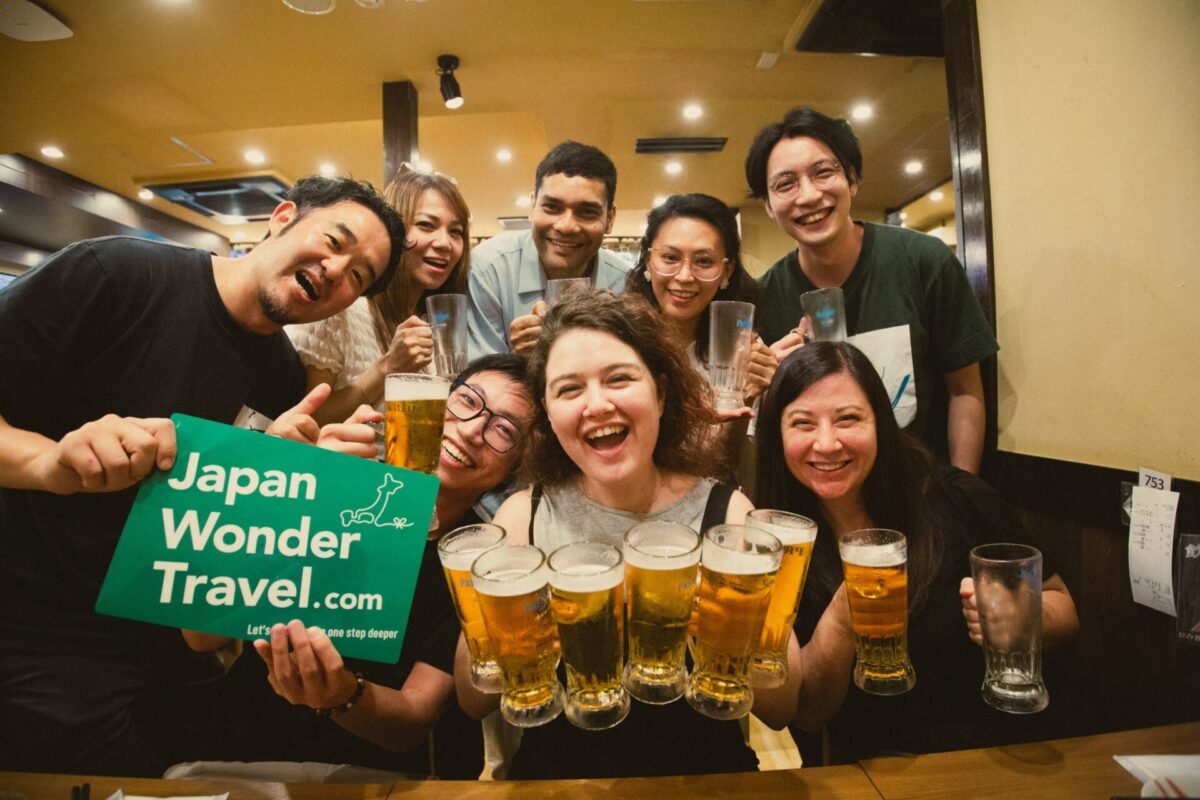
▶Kimono Experience in Tokyo
Step into the charm of the kimono, a beloved icon of Japanese tradition, ideal for festivals and wandering quaint streets. Asakusa offers the perfect setting to don your kimono and create cherished memories with picturesque backdrops. Let Kimono Rental Wargo dress you up for a day of delightful exploration in timeless style!
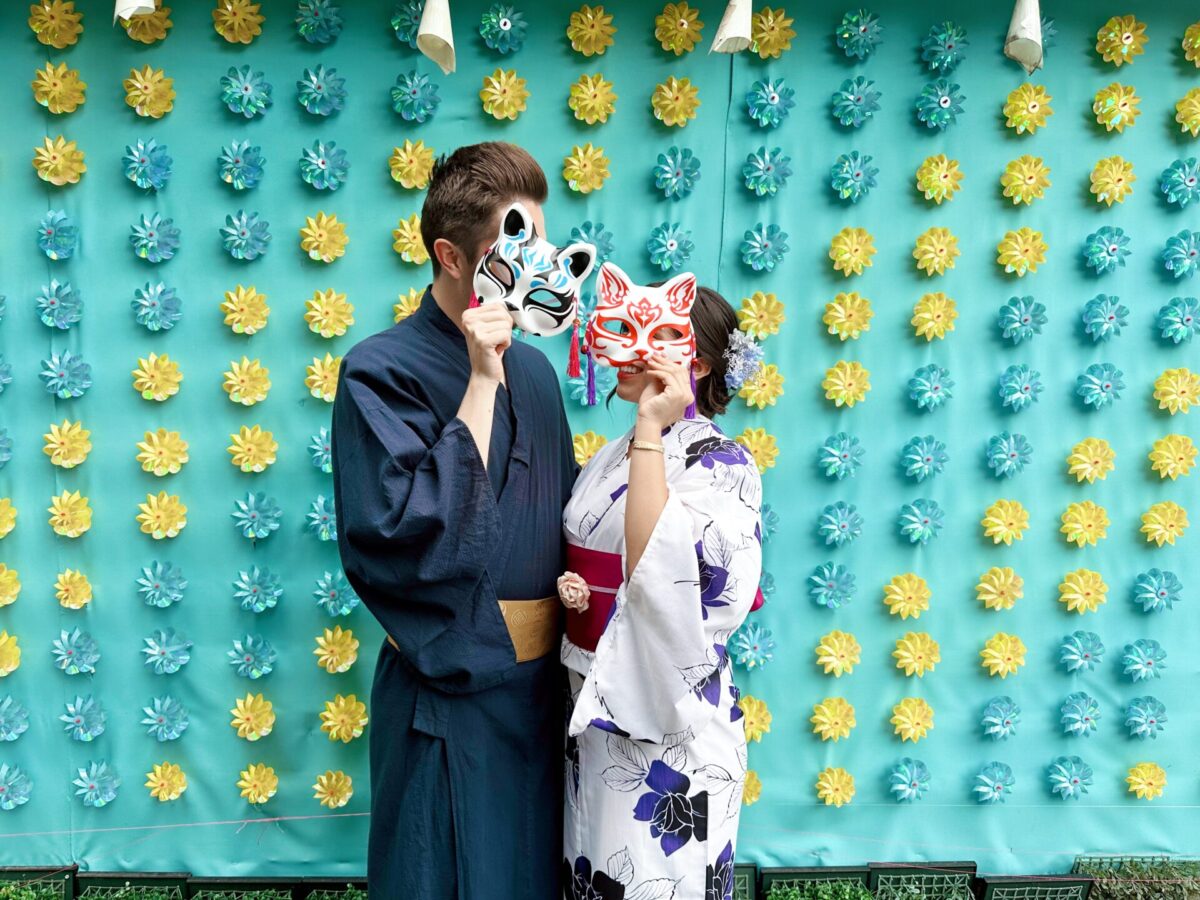
Follow us on Instagram, Facebook, Twitter, and TikTok for more travel inspiration. Or tag us to get featured!
Happy traveling!
